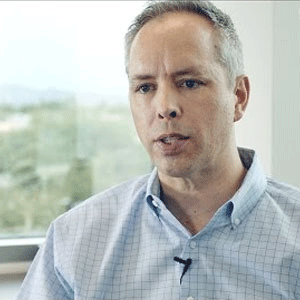THANK YOU FOR SUBSCRIBING

The Importance of a People-Centric Approach in the Transition towards Industry 4.0
Juan Rico Fernandez, Head of Business Development IoT, Teka Group


Juan Rico Fernandez, Head of Business Development IoT, Teka Group
John J. Bernet said in the early XX Century “Men are more important than tools. If you don’t believe so, put a good tool into the hands of a poor workman”. This statement is as relevant as it was at that time since data-driven decision through the penetration of IoT, Cloud, Edge or Artificial Intelligence could lead to great solutions with the wrong approach. The common procedure starts with a business need that through data and its management could be solved. However, the human factor behind must be understood and incorporated into the solution.
The European Commission in their strategy towards a Digital Industry in 2030 has set four pillars to successfully develop this transition. Those are the business, the infrastructure, the governance, and the skills. The first two are clear and no one doubts the need for a business case before any technology development and deployment. Moreover, the MVPs and pilots are gaining relevance to save a lot of money, time, and resources before going to an optimized solution; however, this validation process usually hides the real dimension of the governance and human skills challenge.
People centricity
The workforce often includes people that have been doing the same for many years, these people are usually reluctant to accept change because of two main reasons, risk aversion due to being forced of leaving their comfort area, and fear to lose their current position. Digital technologies have arrived to support people, improve effectiveness, reduce risks and deliver better quality, however, if you don’t count on the key people, not only decision-makers, the investment can be seen as a threat internally instead of as a huge opportunity. For this reason, workforce engagement at all phases has to be a top priority to maximize the benefits and acceptance of the use of those new processes and tools resultant from a modernization investment. As clear as it is right now customer-centricity pays off, we should accept the same concept for people-centric industry 4.0 evolution. Moreover, IoT arrived at factories to improve the quality and the capacity to measure, nevertheless, a great success factor comes from wisdom and experience, and listening to the ones who hold this power is critical to developing an effective system.
Workforce engagement at all phases has to be a top priority to maximize the benefits and acceptance of the use of those new processes and tools resultant from a modernization investment
Data governance and the challenges derived from its creation it is also a huge area. Most of the times it is really difficult to evaluate how much benefits data will bring, especially, to whom. Governance structure becomes critical to properly appoint responsibilities at all levels, system monitoring, data quality monitoring and insights delivery. This is only possible through the creation of really cross-departmental teams including data analysts, business analysts and the people operating the lines. An accurate framing of the tool can save time and money regardless of the implementation methodology you choose.
In summary, Blockchain, AI, IoT, Edge and the Cloud are tools that are necessary to keep being competitive and effective, but without a clear focus on how the people will support you and how all the business benefit from this transition, it can be a big pain. So, remember, the best tool in the wrong hands will make it look the worst thing ever created.
Weekly Brief
I agree We use cookies on this website to enhance your user experience. By clicking any link on this page you are giving your consent for us to set cookies. More info
Read Also













